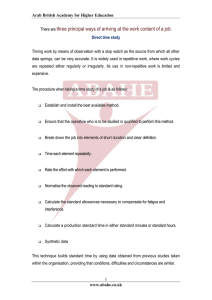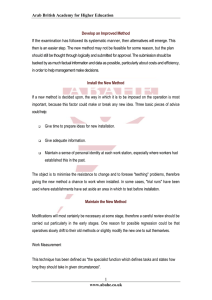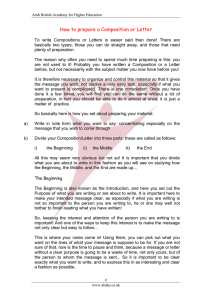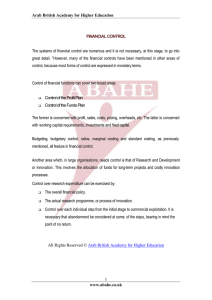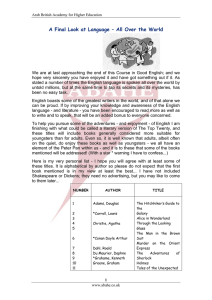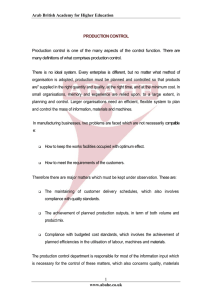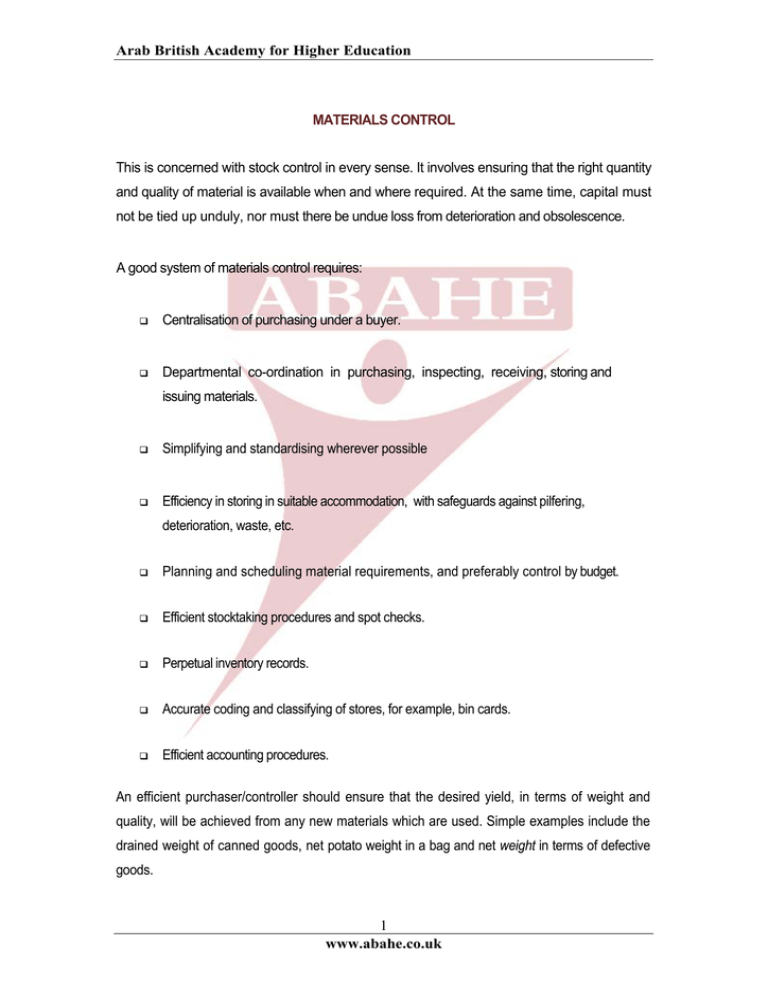
Arab British Academy for Higher Education
MATERIALS CONTROL
This is concerned with stock control in every sense. It involves ensuring that the right quantity
and quality of material is available when and where required. At the same time, capital must
not be tied up unduly, nor must there be undue loss from deterioration and obsolescence.
A good system of materials control requires:
Centralisation of purchasing under a buyer.
Departmental co-ordination in purchasing, inspecting, receiving, storing and
issuing materials.
Simplifying and standardising wherever possible
Efficiency in storing in suitable accommodation, with safeguards against pilfering,
deterioration, waste, etc.
Planning and scheduling material requirements, and preferably control by budget.
Efficient stocktaking procedures and spot checks.
Perpetual inventory records.
Accurate coding and classifying of stores, for example, bin cards.
Efficient accounting procedures.
An efficient purchaser/controller should ensure that the desired yield, in terms of weight and
quality, will be achieved from any new materials which are used. Simple examples include the
drained weight of canned goods, net potato weight in a bag and net weight in terms of defective
goods.
1
www.abahe.co.uk
Arab British Academy for Higher Education
This section of control comes under different departments in different organisations, but, in
each case, the aims are the same, whichever department is administrating the control. Also the
production department is directly involved.
Materials usage can be expressed in ratios or percentage terms, for example, kitchen percentage
or gross profit.
MAINTENANCE CONTROL
The objective of a well maintained department is to keep total maintenance costs to a
minimum. The total cost is a composite of the following:
The total cost of the maintenance function, that is labour and materials.
The cost of lost production through downtime, for example rooms out of commission.
The cost of replacing worn-out equipment. That is the price of new equipment less the
value of the old equipment.
There are several types of maintenance which should be considered. These are:
Maintenance prevention - the avoidance of large scale maintenance by planned
lubrication, greasing, oil changing, cleaning, etc. In such a case strict supervision is
required.
Preventive maintenance - through planned inspections, followed, if necessary, by
repairs. These are all planned and scheduled to avoid loss of productive time.
Planned maintenance - this covers periodic major overhauls, together with the
replacement of critical parts.
Breakdown maintenance - this is undertaken only after a breakdown occurs. It is
usually a panic job and it is accompanied by the loss of productive time.
2
www.abahe.co.uk
Arab British Academy for Higher Education
General maintenance - this covers all types of maintenance. Generally, these categories cover two
broad areas:
Related maintenance - this is directly related to production plant and equipment.
Unrelated maintenance - the maintenance of buildings, services, roadways, etc.
The basic records which aid this type of control are :
Machine utilisation records - these show the cumulative production hours.
Machine history records - these are especially important when the question of
replacement occurs.
Standard times for planned maintenance can be set against whichever actual time can be taken
and measured.
All Rights Reserved © Arab British Academy for Higher Education
3
www.abahe.co.uk

